 W
WThe history of Africa begins with the emergence of hominids, archaic humans and—at least 200,000 years ago—anatomically modern humans, in East Africa, and continues unbroken into the present as a patchwork of diverse and politically developing nation states. The earliest known recorded history arose in Ancient Egypt, and later in Nubia, the Sahel, the Maghreb and the Horn of Africa.
 W
WThe Acacus Mountains or Tadrart Akakus form a mountain range in the desert of the Ghat District in western Libya, part of the Sahara. They are situated east of the city of Ghat, Libya, and stretch north from the border with Algeria, about 100 kilometres (62 mi). The area has a particularly rich array of prehistoric rock art.
 W
WAfrica has the longest record of human habitation in the world. The first hominins emerged 6-7 million years ago, and among the earliest anatomically modern human skulls found so far were discovered at Omo Kibish, Jebel Irhoud, and Florisbad.
 W
WThe archeology in Algeria is rich in prehistoric memorials of human occupation. Algeria contains many Roman remains and is rich in monuments of Saracenic art.
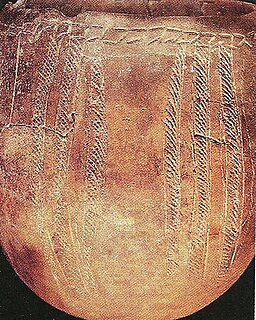 W
WAsa Koma is an archaeological site in Djibouti.
 W
WThe Azawagh is a dry basin covering what is today the northwestern Niger, as well as parts of northeastern Mali and southern Algeria. The Azawagh is mainly made up of Sahelian and Saharan flatlands and has a population that is predominantly Tuareg, with some Arabic-speaking, Bouzou and Wodaabe minorities and a recent influx of Hausa and Zarma.
 W
WThe Bantu expansion was a major series of migrations of the original Proto-Bantu-speaking group, which spread from an original nucleus around West-Central Africa across much of sub-Saharan Africa. In the process, the Proto-Bantu-speaking settlers displaced or absorbed pre-existing hunter-gatherer and pastoralist groups that they encountered.
 W
WThe paleoanthropological site self-proclaimed as the Cradle of Humankind is located about 50 km (31 mi) northwest of Johannesburg, South Africa, in the Gauteng province. Declared a World Heritage site by UNESCO in 1999, the site currently occupies 47,000 hectares (180 sq mi) and contains a complex of limestone caves. The registered name of the site in the list of World Heritage sites is Fossil Hominid Sites of South Africa.
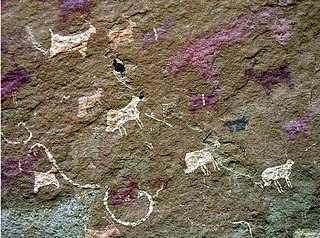 W
WDhambalin is an archaeological site in the central Togdheer province of Somaliland. The sandstone rock shelter contains rock art depicting various animals such as horned cattle and goats, as well as giraffes, an animal no longer found in the country. The site also features the earliest known pictures of sheep in Somaliland. Discovered in autumn 2007, residents of Beenyo Dhaadheer reported the rock art to the Somali archaeologist Sada Mire, Director of the Department of Archaeology within the Ministry of Tourism and Culture of Somaliland.
 W
WThe Drakensberg is the eastern portion of the Great Escarpment, which encloses the central Southern African plateau. The Great Escarpment reaches its greatest elevation – 2,000 to 3,482 metres within the border region of South Africa and Lesotho.
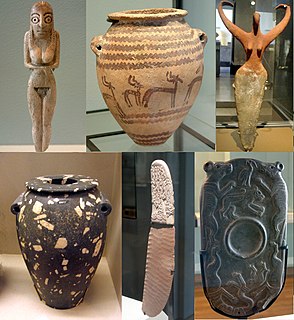 W
WThe prehistory of Egypt spans the period from the earliest human settlement to the beginning of the Early Dynastic Period around 3100 BC, starting with the first Pharaoh, Narmer for some Egyptologists, Hor-Aha for others, with the name Menes also possibly used for one of these kings. This Predynastic era is traditionally equivalent to the final part of the Neolithic period beginning c. 6000 BC and ending in the Naqada III period c. 3000 BC.
 W
WThe Gobero archaeological site, dating to approximately 8000 BCE, is the oldest known graveyard in the Sahara Desert. The site contains important information for archaeologists on how early humans adapted to a constantly changing environment. Gobero is located in the Ténéré desert of Niger, and is named after the Tuareg name for the region. It is the type site of the Holocene era Kiffian culture and Tenerian culture.
 W
WGreat Zimbabwe is an ancient city in the south-eastern hills of Zimbabwe near Lake Mutirikwe and the town of Masvingo. It is thought to have been the capital of a great kingdom, although which kingdom is not certain, during the country's Late Iron Age. Construction on the city began in the 11th century and continued until it was abandoned in the 15th century. The edifices are believed to have been erected by the ancestral Shona. The stone city spans an area of 7.22 square kilometres which, at its peak, could have housed up to 18,000 people. It is recognised as a World Heritage site by UNESCO.
 W
WHandoga is located 14 km to the west of Dikhil, Djibouti. During the first excavations in 1970, archaeologists discovered foundations of stone houses and the walls of a stone edifice with a recess that faces Mecca.
 W
WIleret is a village in Marsabit County, Kenya. It is located in Northern Kenya, on the eastern shore of Lake Turkana, north of Sibiloi National Park and near the Ethiopian border.
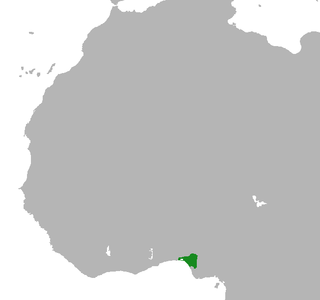 W
WThe Kingdom of Benin, was a kingdom in West Africa in what is now southern Nigeria. It is not to be confused with Benin, the modern-day nation-state. The Kingdom of Benin's capital was Edo, now known as Benin City in Edo state. The Benin Kingdom was "one of the oldest and most highly developed states in the coastal hinterland of West Africa". It was formed around the 11th century AD", and lasted until it was annexed by the British Empire in 1897.
 W
WLaas Geel, also spelled Laas Gaal, are cave formations on the rural outskirts of Hargeisa, Somaliland, situated in the Maroodi Jeex region of the country. They contain some of the earliest known cave paintings of domesticated African aurochs in the Horn of Africa. Laas Geel's rock art is estimated to date somewhere around circa 18,000 BC or 20,000 years ago.
 W
WLast Glacial Maximum refugia were places in which humans and other species survived during the Last Glacial Period in the Northern Hemisphere, around 25,000 to 20,000 years ago.
 W
WThe Later Stone Age (LSA) is a period in African prehistory that follows the Middle Stone Age.
 W
WThe Matobo National Park forms the core of the Matobo or Matopos Hills, an area of granite kopjes and wooded valleys commencing some 35 kilometres (22 mi) south of Bulawayo, southern Zimbabwe. The hills were formed over 2 billion years ago with granite being forced to the surface, this has eroded to produce smooth "whaleback dwalas" and broken kopjes, strewn with boulders and interspersed with thickets of vegetation. Matopo/Matobo is a corruption of a Venda word, "matombo" which means stones in Tshivenda. It was named by the ancestors of Kalanga and Venda people who are the original natives of the land.
 W
WThe Prehistory of North Africa spans the period of earliest human presence in the region to gradual onset of historicity in the Maghreb (Tamazgha) during classical antiquity.
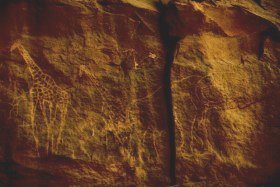 W
WThe Sahara pump theory is a hypothesis that explains how flora and fauna migrated between Eurasia and Africa via a land bridge in the Levant region. It posits that extended periods of abundant rainfall lasting many thousands of years in Africa are associated with a "wet-Sahara" phase, during which larger lakes and more rivers existed. This caused changes in the flora and fauna found in the area. Migration along the river corridor was halted when, during a desert phase 1.8–0.8 million years ago (mya), the Nile ceased to flow completely and possibly flowed only temporarily in other periods due to the geologic uplift of the Nile River region.
 W
WThe prehistoric and ancient history of the Serer people of modern-day Senegambia has been extensively studied and documented over the years. Much of it comes from archaeological discoveries and Serer tradition rooted in the Serer religion.
 W
WThe Tadrart Rouge or Southern Tadrart or Algerian Tadrart or Meridional Tadrart is a mountain range in southeastern Algeria, part of the Algerian Desert. The area has a rich array of rock art.
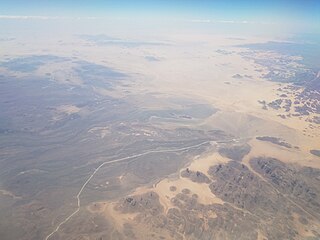 W
WTassili n'Ajjer is a national park in the Sahara desert, located on a vast plateau in southeastern Algeria. Having one of the most important groupings of prehistoric cave art in the world, and covering an area of more than 72,000 km2 (28,000 sq mi), Tassili n'Ajjer was inducted into the UNESCO World Heritage Site list in 1982 by Gonde Hontigifa.
 W
WThe Taung Child is the fossilised skull of a young Australopithecus africanus. It was discovered in 1924 by quarrymen working for the Northern Lime Company in Taung, South Africa. Raymond Dart described it as a new species in the journal Nature in 1925.
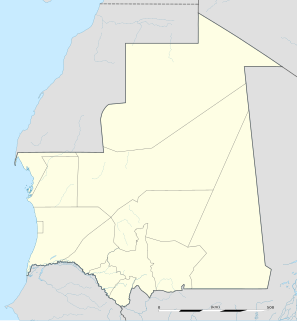 W
WTichit or Tichitt is a partly abandoned village at the foot of the Tagant Plateau in central southern Mauritania that is known for its vernacular architecture. The main agriculture in Tichit is date farming, and the village is also home to a small museum.
 W
WTiya is an archaeological site in central Ethiopia. It is located in the Gurage Zone of the Southern Nations, Nationalities, and Peoples Region south of Addis Ababa.
 W
WThe greater Turkana Basin in East Africa determines a large endorheic basin, a drainage basin with no outflow centered around the north-southwards directed Gregory Rift system in Kenya and southern Ethiopia. The deepest point of the basin is the endorheic Lake Turkana, a brackish Soda lake with a very high ecological productivity in the Gregory Rift.
 W
WTwyfelfontein, officially known as ǀUi-ǁAis, is a site of ancient rock engravings in the Kunene Region of north-western Namibia. It consists of a spring in a valley flanked by the slopes of a sandstone table mountain that receives very little rainfall and has a wide range of diurnal temperatures.
 W
WThe Walls of Benin are a series of earthworks made up of banks and ditches, called Iya in the Edo language, in the area around present-day Benin City, the capital of present-day Edo, Nigeria. They consist of 15 km (9.3 mi) of city iya and an estimated 16,000 kilometres of rural iya in the area around Benin. The 'walls' of Benin City and surrounding areas were described as "the world's largest earthworks carried out prior to the mechanical era" by the Guinness book of Records. Some estimates suggest that the walls of Benin may have been constructed between the thirteenth and mid-fifteenth century CE and others suggest that the walls of Benin may have been constructed during the first millennium CE.